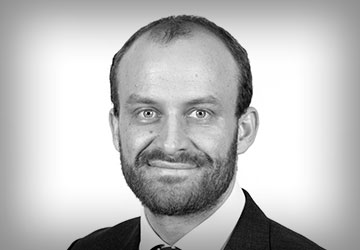News
STOP PRESS - Is a noise induced hearing loss claim a ‘disease’ for the purposes of the costs of a CFA?
In Dalton v British Telecom plc, QBD [2015] ICR 901, the High Court (Phillips J.) considered that a claim for noise induced hearing loss (“NIHL”) was a disease claim, when determining the recoverability and level of success fees in pre-April 2013 CFA funded cases.
The Claimants brought NIHL claims against the former Defendant employer which were compromised by way of a settlement agreement prior to trial.
The Parties’ agreed a figure in respect of damages; in addition to which the Defendant agreed, in principle to pay the Claimants’ costs of the action. The quantum of solicitors and counsels’ CFA costs were, however, disputed; and in particular the level of success fee which those costs ought properly to attract. If NIHL was to be regarded as a disease claim, the case would fall within the scope of section V of CPR Part 45; and the Claimants’ legal representatives would be entitled to a success fee of 62.5% on settlement of claims; this section relating to disease claims settled before trial (other than for certain irrelevant specified conditions).
Otherwise, a NIHL claim would be classified as an injury and, if 'sustained' on or after 1 October 2004 fell within section IV; attracting a (considerably lower) success fee of only 25%. If sustained before that date, the success fee was not fixed and fell to be assessed by the Court, if not agreed.
On 4th April 2013 and following a number of (first instance) decisions at District Judge level providing inconsistent conclusions, the Regional Costs Judge directed that the issue be referred for determination by High Court Judge as a preliminary issue.
At the High Court, the Defendant contended, in reliance on certain aspects of the aetiology of NIHL and the case of Patterson v. Ministry Defence [2013] 2 Costs LR 197, disease should be given its natural ordinary meaning. To the layman, this rendered NIHL an injury, not a disease; on the basis that:
i) NIHL is caused by the physical force of excessive noise on the structure of the inner ear, degrading hair cells; rather than regenerate, the hair cells are replaced by scar tissue;
ii) Long term exposure will typically lead to gradual and progressive hearing loss; the symptoms often being first noticed when age-related hearing loss overlays the (earlier) traumatic loss;
iii) However, the damage suffered from each instance of exposure occurs immediately with progressive worsening limited to days or weeks post exposure.
Whereas the Claimants accepted the layman ( with no background in NIHL claims) may well regard NIHL as an injury (rather than a disease);when placed in the proper legislative and medical context, it was clear that the term disease within the rules had an established meaning sufficient to include NIHL.
Consideration of the legislative history, starting with the Workmen’s Compensation Act 1906; the National Insurance (Industrial Injuries) Act 1946, the Social Security (Industrial Injuries) (Prescribed Diseases) Regulations 1985 and the recommendations of the Industrial Injuries Advisory Committee in 1973 (under their statutory powers); plainly indicated Parliament’s intention to classify NIHL as disease claims.
The Court also took into account that CPR 45 Section V’s previous incarnation, which came into force on 1st October 2005 and had, by convention of the Court, practitioners and insurers, treated NIHL as a type C disease claim. The Court also examined the cases of Barker v Corus [2006] 2 AC 572 and Sienkiewicz v Grief (UK) Ltd [2011] 2 AC 299 (SC) both in which it was observed that loss of hearing claims were to be categorised as disease claims.
Finally, the Court considered a press release from the Civil Justice Counsel and the Civil Procedure Rules Committee; concluding that NIHL should be included in the classification of diseases for the purposes of section V. Applying R v Secretary of State for the Environment Ex parte Spath Holme Ltd [2001] 2 AC 349 and distinguishing Patterson; and thereby favouring a purposive construction the Court outlined that:
a) Occupational deafness had been expressly defined as a disease since 1985, Parliament must therefore have intended NIHL to be a disease for the purposes of the related legislation;
b) NIHL was recognised as an occupational disease; and accounted for the majority of such claims. It is a paradigm case of such. It was inconceivable, when looked at in its proper litigation context that Parliament did not intend to include NIHL in type C of section V of the current rules;
c) The Civil Justice Council’s press release recorded the ‘industry agreement’ of NIHL as a disease and this likely put the matter beyond any sensible argument.
In the circumstances, NIHL claims plainly fell within the remit of Section V, attracting the higher success fee if settled before trial.


